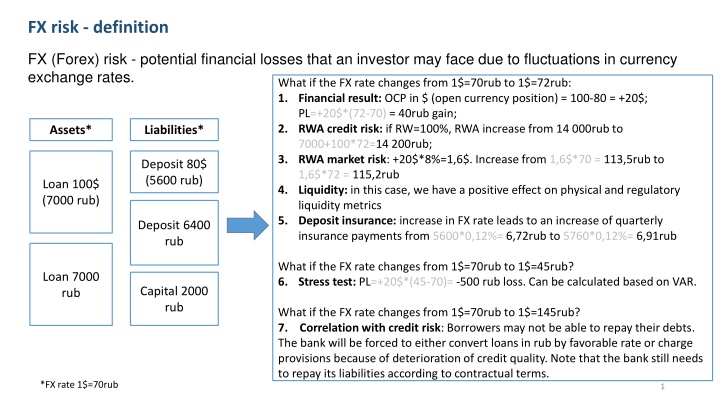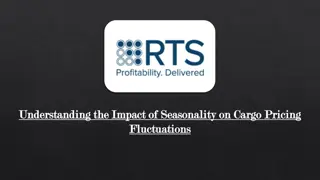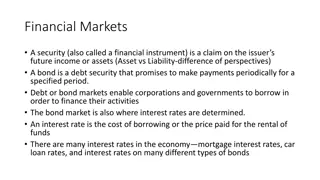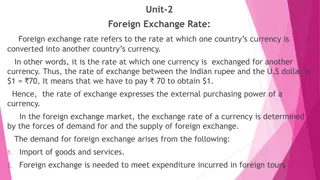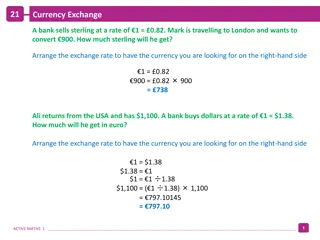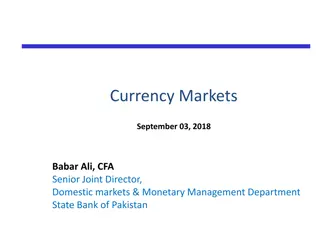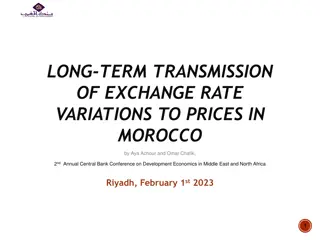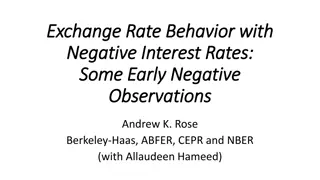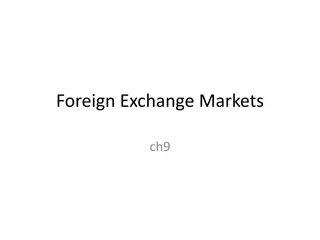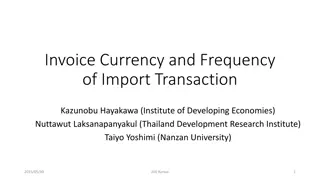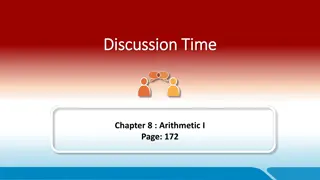FX Risk: Understanding Currency Exchange Rate Fluctuations
Potential financial losses from fluctuations in currency exchange rates impact investors. Changes in FX rates can have various effects on financial results, risk-weighted assets, liquidity, and more. Managing FX risk involves considering open currency positions, stress tests, regulatory liquidity requirements, and market risks.
Download Presentation

Please find below an Image/Link to download the presentation.
The content on the website is provided AS IS for your information and personal use only. It may not be sold, licensed, or shared on other websites without obtaining consent from the author.If you encounter any issues during the download, it is possible that the publisher has removed the file from their server.
You are allowed to download the files provided on this website for personal or commercial use, subject to the condition that they are used lawfully. All files are the property of their respective owners.
The content on the website is provided AS IS for your information and personal use only. It may not be sold, licensed, or shared on other websites without obtaining consent from the author.
E N D
Presentation Transcript
FX risk - definition FX (Forex) risk - potential financial losses that an investor may face due to fluctuations in currency exchange rates. What if the FX rate changes from 1$=70rub to 1$=72rub: 1. Financial result: OCP in $ (open currency position) = 100-80 = +20$; PL=+20$*(72-70) = 40rub gain; 2. RWA credit risk: if RW=100%, RWA increase from 14 000rub to 7000+100*72=14 200rub; 3. RWA market risk: +20$*8%=1,6$. Increase from 1,6$*70 = 113,5rub to 1,6$*72 = 115,2rub 4. Liquidity: in this case, we have a positive effect on physical and regulatory liquidity metrics 5. Deposit insurance: increase in FX rate leads to an increase of quarterly insurance payments from 5600*0,12%= 6,72rub to 5760*0,12%= 6,91rub Assets* Liabilities* Deposit 80$ (5600 rub) Loan 100$ (7000 rub) Deposit 6400 rub What if the FX rate changes from 1$=70rub to 1$=45rub? 6. Stress test: PL=+20$*(45-70)= -500 rub loss. Can be calculated based on VAR. Loan 7000 rub Capital 2000 rub What if the FX rate changes from 1$=70rub to 1$=145rub? 7. Correlation with credit risk: Borrowers may not be able to repay their debts. The bank will be forced to either convert loans in rub by favorable rate or charge provisions because of deterioration of credit quality. Note that the bank still needs to repay its liabilities according to contractual terms. *FX rate 1$=70rub 1
1. OCP Open currency position IE6.1 Components included in calculation of OCP (pls find the calculation in illustrative example): - Assets (Loans, Nostro) minus provisions - Deposits, CA and other liabilities - Spot and forward deals - Guarantees provided in FX with conversion factor Reporting the OCP to the top management: bln RUB 30 23 The common approach of OCP management: 1. OCP of banking book ~0 The idea is that banking book represents a core banking activity and should generate stable income, not speculating income. 5 3 2. OCP of trading book depend on trading strategy -15 USD EUR CFH Other Balancing position 3. Total OCP of the bank could be limited by the local regulations. Local central bank may have the specific rules in place which penalize banks for having OCP. 2
3. RWA on market risk FX risk: Measure the risks inherent in a bank s mix of long and short positions in different currencies as set out in 3
4. Regulatory liquidity Net stable funding ratio (NSFR) H28 in Russia Liquidity coverage ratio (LCR) H26 in Russia Availability of stable funding of the banking group to fund balance assets and credit-related commitments on > 1-year horizon Ability of the banking group to fulfill its obligations during 30 days in the stress of liquidity using its liquidity cushion Share capital 100% Corporate deposits and CA >1year 100% All retail deposits and CA 90% Cash 100% Corporate deposits and CA <1year 50% O/N loans to Central bank 100% All other funding (incl bonds issued) 0% Sovereign bonds 100% Corporate bonds (not less than BBB-) 50% NSFR= ????????? ?????? ??????? (???) ???????? ?????? ??????? (???)>100% ??? ??????? ?????? ?????? ??? ???????? ??? 30? ??? ??????? ??? 30?>100% LCR= O/N loans to Central bank 0% Funding from central bank <30d 0% Interbank loans granted <30d 100% Sovereign bonds 5% All retail deposits and CA 10% Corporate bonds (not less than BBB-) 15% All other loans granted <30d 50% Corporate deposits and CA <30d 40% Interbank loans granted <6m 15% Interbank borrowings <30d 100% Other loans granted < 1 year 50% Other borrowings < 30d 100% Other loans granted> 1 year 85% Credit related commitments 5-100% Other assets 100% 4 Credit related commitments 5%
Interest rate parity and cost of OCP hedging IE6.1 Concept of interest rate parity: Active OCP Hedging has implicit cost: The inputs are: If we assume no arbitrage, the following equation should be fair: PV1 (1+R1 t)=PV1 S (1+R2 t) F Hence: F=? (? + ?1 1 t) (? + ?2 2 t) t) t)= ??.? F= 5
